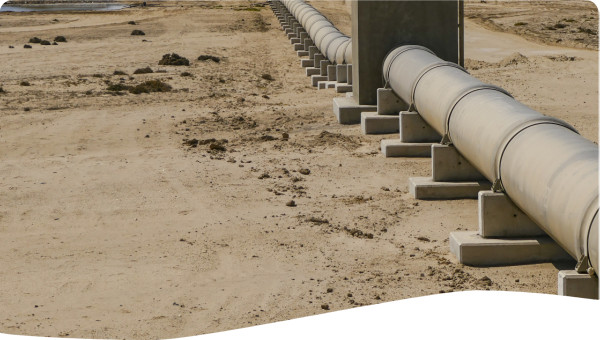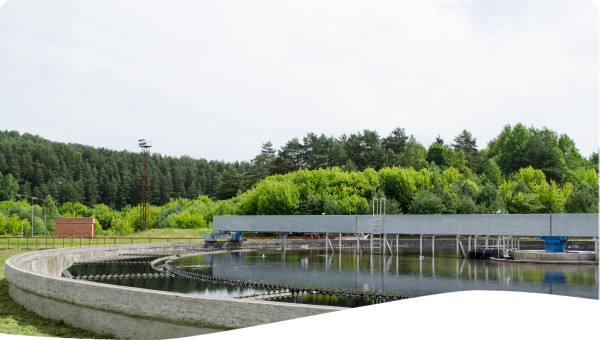Addressing the shortage of clean water, we have developed an innovative atmospheric water generation technology. Using our self-developed materials for surface-enhanced adsorption, it produces large quantities of clean water from the air in a portable and transportable manner, without relying on existing water sources. This represents a new approach to solving the global drinking water crisis. Our technology has already achieved a cost comparable to desalination for end-users and is expected to reduce costs to half that of desalination through mass application in the Middle East. It can also be implemented in Africa, India, and other regions lacking pure and safe drinking water.
According to United Nations data, 2-3 billion people around the world are currently suffering from water scarcity. Over the past 40 years, global water use has increased at a rate of about 1 percent per year and is expected to continue growing at a similar rate until 2050. Common water purification technologies are large-scale and centralized, often requiring high rates of urbanization to support them. However, with nearly 4 billion people worldwide currently living in non-urban areas, there is a greater need for distributed water purification innovations.
Traditional water technologies, such as reverse osmosis and multi-stage distillation, face numerous issues from a technical perspective. Filtration systems are prone to clogging, leading to high maintenance costs. Additionally, these technologies suffer from high energy consumption and low energy conversion efficiency. Therefore, finding and utilizing new freshwater technologies has become a pressing issue worldwide.
As argued in the recent Nature journal article, solutions involving atmospheric water generation and photovoltaic power can effectively address this global problem. Areas with water shortages and high humidity overlap by more than 80 percent, providing the basic conditions for the widespread application of these technologies.
We have developed an adsorbent functional nanocomposite material that can rapidly and continuously absorb moisture even at very low humidity levels. This breakthrough comes after more than five years of research and development in the materials laboratory of Tsinghua University. Our material boasts ultra-high performance and low-cost batch preparation, outperforming other molecular sieve materials, MOF materials, and salt solution systems.
In actual tests at 30% humidity, 1 kg of this material can adsorb more than 1 kg of water in 1 hour. It has undergone more than 10,000 cycle tests, ensuring a practical lifespan of over three years. With manufacturing costs controlled within $15, this technology is affordable for end-users.
By integrating this new material system with a compressor heat pump, we achieve water production across a wide humidity range, suitable for diverse applications. Our mature manufacturing system supports low-cost, high-throughput, rapid mass production.
We have developed both distributed and centralized air water capture systems utilizing this new adsorption material technology. The distributed air water capture equipment can be mounted on the back of solar panels, continuously capturing between 300 to 1,000 tonnes of pure water per year at low temperatures and low humidity. The centralized air water capture system is a large-scale unit capable of capturing between 2,000 to 10,000 tonnes of pure water continuously under similar conditions, with costs as low as $2 per tonne of water.
Our technology has been widely adopted in water-scarce application scenarios, such as serving desert reclamation, agricultural irrigation, ecological restoration, island development and other basic security issues that affect the survival and livelihood of billions of people.
Since our establishment in 2020, we have achieved significant commercial milestones that validate our technology and strengthen our business model and go-to-market strategy. In 2023, we contracted with Royal Strategic Partners of Abu Dhabi Capital Group for a large-scale air water capture agricultural irrigation project, securing 2-year projects totaling $110 million.
We have also collaborated with the UW Group on desert soil improvement, committing to transform over 30,000 acres of desert land.
Beyond commercial efforts, we have formed partnerships with several charities and foreign aid organizations to assist water-scarce regions in Africa. In June 2022, we donated a batch of atmospheric water generators to Ethiopia, providing clean water to thousands of Ethiopian elementary school students.
Technological advancements like air-to-water technology are crucial in addressing water scarcity. Encouraging innovation and exploring non-traditional water sources can offer new solutions to persistent water challenges.
Air-to-water technology is adaptable to different environments, including arid and desert areas. This adaptability should be factored into water management strategies to effectively address diverse climatic conditions.
Effective air-to-water systems depend on careful design choices, such as selecting the right adsorbents and optimizing heat and mass transfer. These considerations are vital for maximizing efficiency and guiding other countries in developing their water extraction systems.
Air-to-water technology holds significant market potential, especially in water-stressed regions. Policymakers should support market development through incentives and policies to enhance cost-effectiveness and widespread adoption.
Air-to-water technology is environmentally friendly and sustainable, reducing reliance on groundwater and protecting ecological systems. Promoting such technologies helps to conserve natural resources and maintain environmental balance.
 Case studies
Case studies
